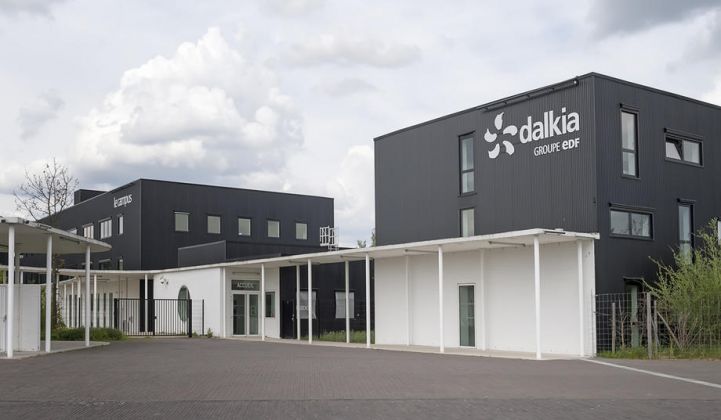French energy efficiency leader Dalkia is rolling out a software platform that could improve district heating system efficiency in France by up to 3 percent.
The platform, developed as part of an IT project called Rézonance, could also help Dalkia boost the renewable share of district heating energy consumption by up to 5 percent, said Nicolas Le Ru, of Dalkia’s Energy Savings Center unit.
Most of the benefits will come as a result of a simple trick that became clear once researchers began looking into detailed near-real-time data on district heating energy consumption.
The data showed that ramps in heating demand, for example on cold mornings, were being met by substations simultaneously across each district heating system.
This caused peaks in energy demand that would often have to be met by adding gas generation on top of biomass, increasing emissions and reducing the efficiency of the system.
One of the key advantages of Rézonance is it helps monitor loads so that substations can be set to respond to demand peaks sequentially rather than simultaneously, reducing the need for gas generation.
At the same time, Dalkia can cut the set temperature of district heating systems by up to 5 degrees during ramp events, further lowering the need to bring gas-fired generation online.
Dalkia had not been able to introduce these improvements before because of poor data collection, Le Ru told an audience at PI World, an event run by the industrial systems software maker OSIsoft, in Barcelona, Spain in September.
Previously, the company had relied on entering thousands of records into an Excel spreadsheet by hand every month, said Le Ru. Three years ago, Dalkia started equipping substations with network connections to collect data with a 10-minute delay.
The Rézonance platform, which has been tailored to small, mid-scale and large projects, was perfected across 22 district heating systems in Rhone-Alpes, Bourgogne and Loire Auvergne.
It has since been rolled out to a total of 55 Dalkia district heating systems in France. And the company intends to take the total up to 100 in the next two years, under a rollout being planned for this October.
Rézonance will be offered as standard in all new Dalkia district heating bids, Le Ru said. However, it will not be used in every one of the 350 or so district heating projects that Dalkia has in France, said Le Ru, because it wouldn’t make sense to install it on systems nearing the end of their contracts.
Instead, Dalkia is prioritizing its rollout based on contract length and current project performance.
Le Ru would not speculate on the overall savings that could arise from using the system, partly because improved data might show that some district heating plants are already running efficiently.
“Sometimes it is less; sometimes you can have very, very big improvements,” he said. “It’s not easy to give a number.”
However, he said, so far “in every situation we’ve managed to increase the renewable energy we use for district heating.”
The improvement typically ranged from 1 percent to 5 percent, he said. For now, it is unclear if Rézonance will be applied to Dalkia district heating projects beyond France. However, the company, which is owned by EDF Group, is expanding abroad.
In August, for example, Dalkia bought Aegis Energy Services, a combined heat and power player in the U.S. The acquisition came after DK Energy, a U.S. Dalkia subsidiary, paid an undisclosed sum for the energy services company Groom Energy Solutions in 2016.
Last month, the research firm Global Market Insights estimated the worldwide district heating and cooling market was set to grow from its current market value of more than $200 billion to over $400 billion by 2024.
“Increasing implementation of regulatory policies pertaining to carbon emissions, coupled with growing adoption of sustainable energy technologies, will stimulate the district heating and cooling market,” said the firm.
“Technological advancement, ease of compatibility with various sources, lower thermal losses and high operational efficiency are some of the...parameters which makes its adoption preferable when compared with other conventional technologies.”




